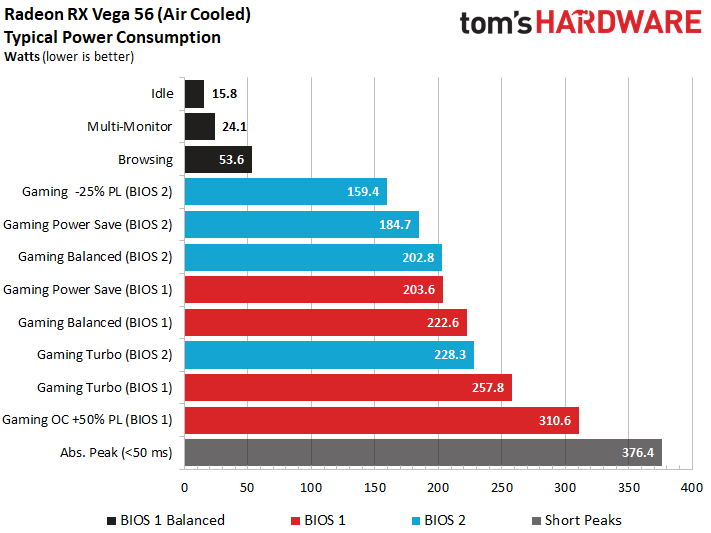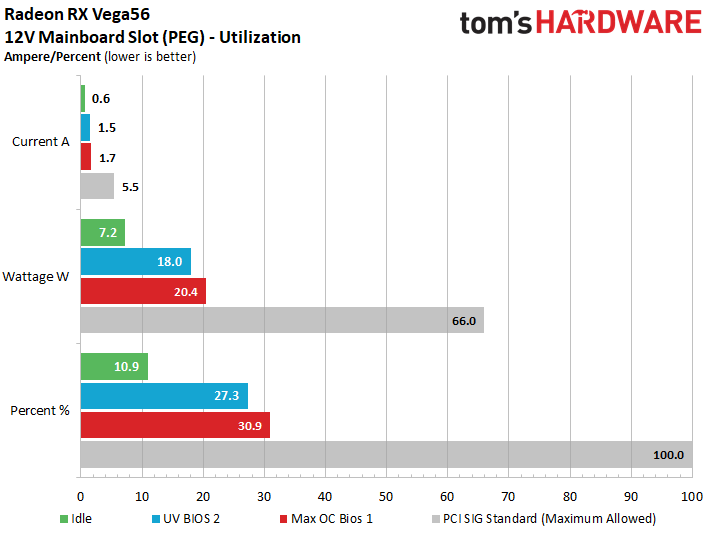AMD Radeon RX Vega 56 8GB Review
Why you can trust Tom's Hardware
Power Consumption: Testing Eight Different Settings
Similar to AMD's Radeon RX Vega 64, the Vega 56 offers two BIOSes with corresponding power profiles that can be selected using a switch on the card. If you don't change the driver-based profiles, the primary BIOS imposes a 165W package limit, while the secondary BIOS drops that to 150W.
We ran our maximum gaming load benchmark, The Witcher 3 at 4K, for all six combinations. In addition, we switched the Radeon RX Vega 56 to AMD's secondary BIOS, underclocked it slightly, and lowered the power limit by 25%. Finally, we also overclocked the card using its primary BIOS and increased the power limit by 50%. In total, this gives us eight different configurations to compare.
Let's start with power consumption, then move on to efficiency, frequencies, temperature, and noise:
We used our highest overclock to established the maximum motherboard slot power consumption. The 1.7A we measured is just 27% of the PCI-SIG’s specified limit of 5.5A. AMD has come a long way from the days of its Radeon RX 480.
In the end, we could have saved ourselves the trouble of dealing with a second BIOS, which requires that you shut your system down and open its case every time you want to toggle one way or the other. Our measurements show the primary BIOS' Power Save mode is similar to the secondary BIOS' Balanced mode, after all. From there, lowering the power limit by ~10% using the primary BIOS would roughly equal Power Save mode using the secondary BIOS.
Ultimately, two more WattMan profiles could have replaced the BIOS switch entirely.
Primary BIOS Power Consumption Graphs
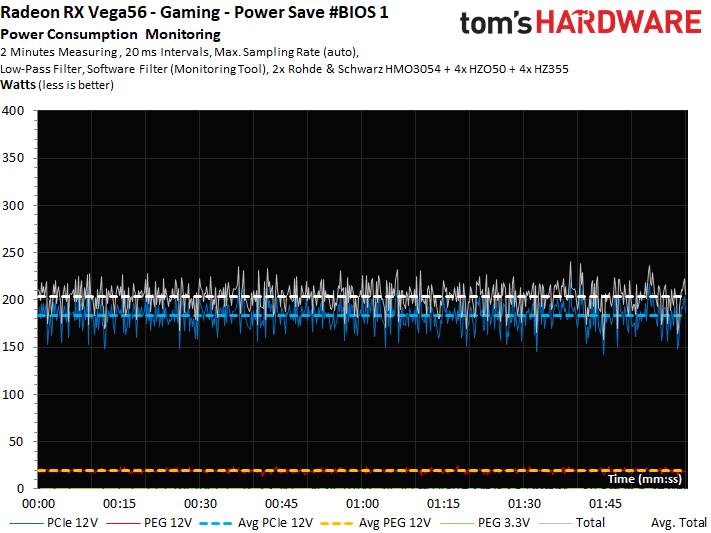
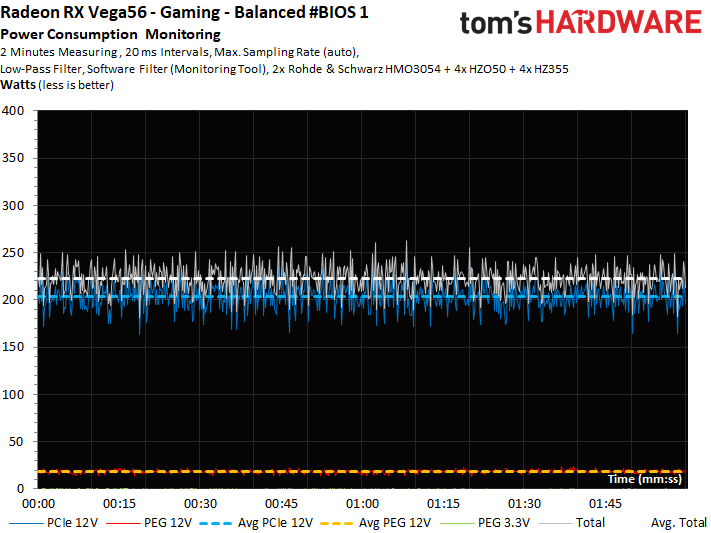
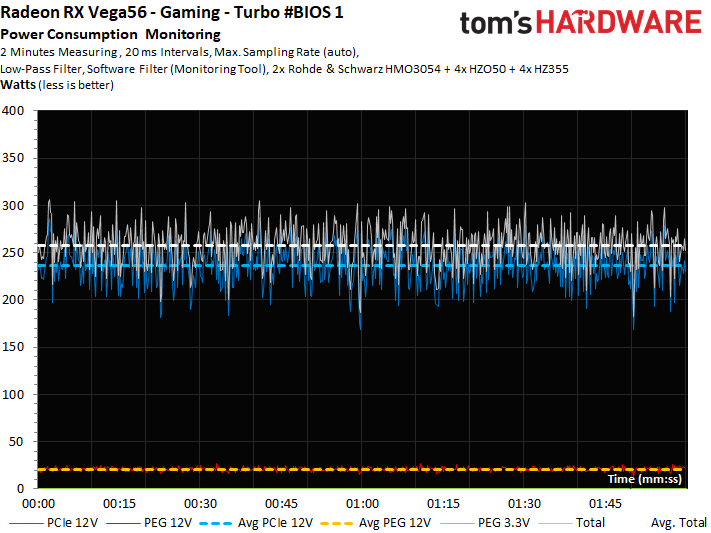
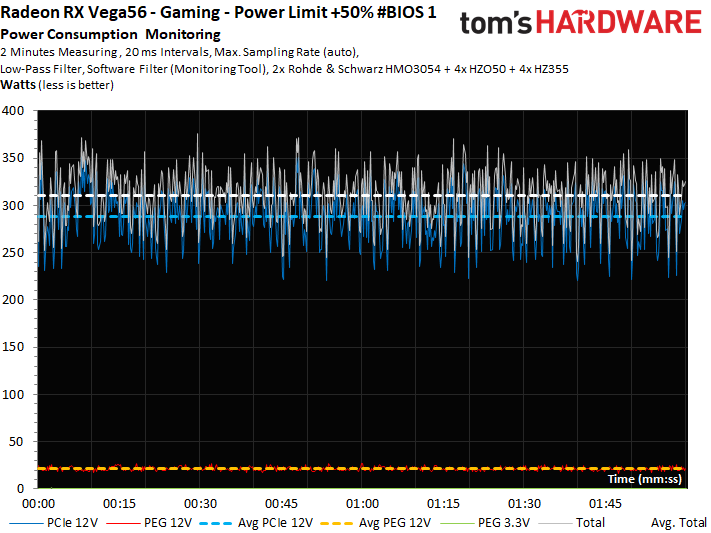
For each BIOS, we provide comparison curves showing the voltage control at work and the loads on the individual power connectors over time.
Get Tom's Hardware's best news and in-depth reviews, straight to your inbox.
Secondary BIOS Power Consumption Graphs
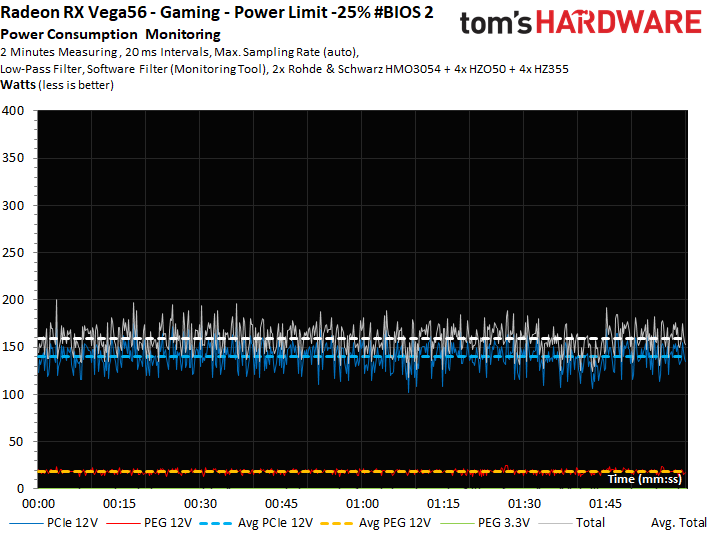
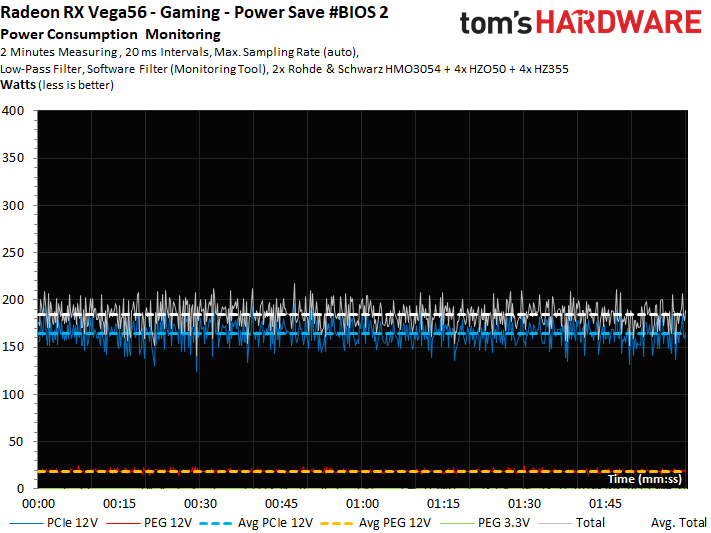
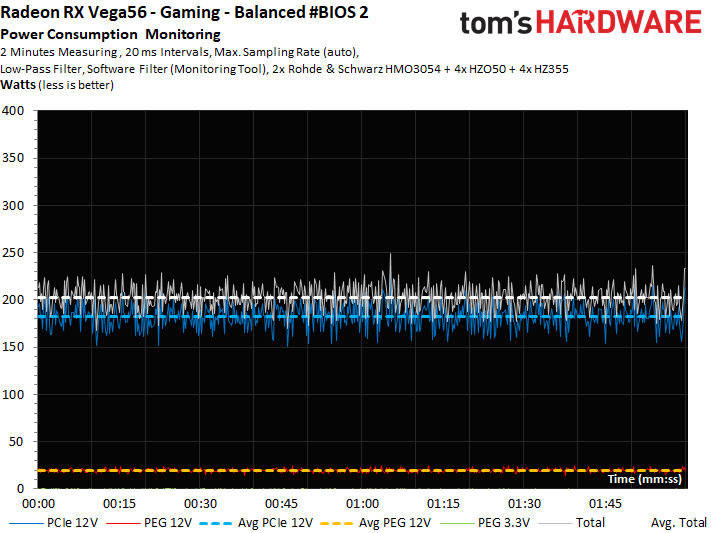
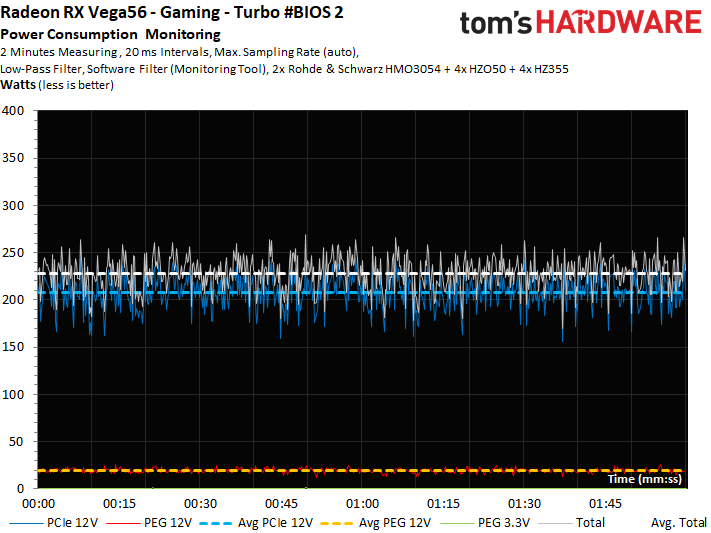
MORE: Best Graphics Cards
MORE: Desktop GPU Performance Hierarchy Table
MORE: All Graphics Content
Current page: Power Consumption: Testing Eight Different Settings
Prev Page Ethereum Mining Next Page Overclocking, Underclocking, Efficiency & Temperature-
kjurden What a crock! I didn't realize that Tom's hardware pandered to the iNvidiot's. AMD VEGA GPU's have rightfully taken the performance crown!Reply -
Martell1977 Vega 56 vs GTX 1070, Vega goes 6-2-2 = Winner Vega!Reply
Good job AMD, hopefully next gen you can make more headway in power efficiency. But this is a good card, even beats the factory OC 1070. -
Wisecracker Thanks for the hard work and in-depth review -- any word on Vega Nano?Reply
Some 'Other Guys' (Namer Gexus?) were experimenting on under-volting and clock-boosting with interesting results. It's not like you guys don't have enough to do, already, but an Under-Volt-Off Smack Down between AMD and nVidia might be fun for readers ...
-
pavel.mateja No undervolting tests?Reply
https://translate.google.de/translate?sl=de&tl=en&js=y&prev=_t&hl=de&ie=UTF-8&u=https://www.hardwareluxx.de/index.php/artikel/hardware/grafikkarten/44084-amd-radeon-rx-vega-56-und-vega-64-im-undervolting-test.html&edit-text= -
10tacle Reply20112576 said:What a crock! I didn't realize that Tom's hardware pandered to the iNvidiot's. AMD VEGA GPU's have rightfully taken the performance crown!
Yeah Tom's Hardware does objective reviewing. If there are faults with something, they will call them out like the inferior VR performance over the 1070. This is not the National Inquirer of tech review sites like WCCTF. There are more things to consider than raw FPS performance and that's what we expect to see in an honest objective review.
Guru3D's conclusion with caveats:
"For PC gaming I can certainly recommend Radeon RX Vega 56. It is a proper and good performance level that it offers, priced right. It's a bit above average wattage compared to the competitions product in the same performance bracket. However much more decent compared to Vega 64."
Tom's conclusion with caveats:
"Even when we compare it to EVGA’s overclocked GeForce GTX 1070 SC Gaming 8GB (there are no Founders Edition cards left to buy), Vega 56 consistently matches or beats it. But until we see some of those forward-looking features exposed for gamers to enjoy, Vega 56’s success will largely depend on its price relative to GeForce GTX 1070."
^^And that's the truth. If prices of the AIB cards coming are closer to the GTX 1080, then it can't be considered a better value. This is not AMD's fault of course, but that's just the reality of the situation. You can't sugar coat it, you can't hide it, and you can't spin it. Real money is real money. We've already seen this with the RX 64 prices getting close to GTX 1080 Ti territory.
With that said, I am glad to see Nvidia get direct competition from AMD again in the high end segment since Fury even though it's a year and four months late to the party. In this case, the reference RX 56 even bests an AIB Strix GTX 1070 variant in most non-VR games. That's promising for what's going to come with their AIB variants. The question now is what's looming on the horizon in an Nvidia response with Volta. We'll find out in the coming months. -
shrapnel_indie We've seen what they can do in a factory blower configuration. Are board manufacturers allowed to take 64 and 56 and do their own designs and cooling solutions, where they can potentially coax more out of it (power usage aside)? Or are they stuck with this configuration as Fury X and Fury Nano were stuck?Reply -
10tacle No, there will be card vendors like ASUS, Gigabyte, and MSI who will have their own cooling. Here's a review of an ASUS RX 64 Strix Gaming:Reply
http://hexus.net/tech/reviews/graphics/109078-asus-radeon-rx-vega-64-strix-gaming/ -
pepar0 Reply
Will any gamers buy this card ... will any gamers GET to buy this card? Hot, hungry, noisy and expensive due to the crypto currency mining craze was not what this happy R290 owner had in mind.20112412 said:Radeon RX Vega 56 should be hitting store shelves with 3584 Stream processors and 8GB of HBM2. Should you scramble to snag yours or shop for something else?
AMD Radeon RX Vega 56 8GB Review : Read more
